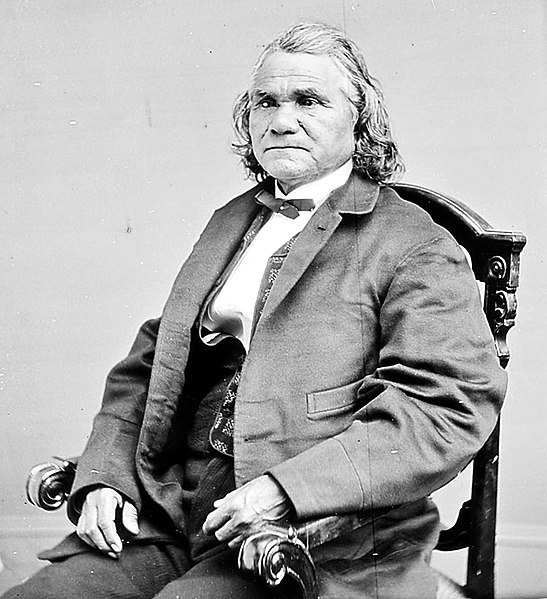Indian Territory and the Indian Territories are terms that generally described an evolving land area set aside by the United States government for the relocation of Native Americans who held original Indian title to their land as an independent nation-state. The concept of an Indian territory was an outcome of the U.S. federal government's 18th- and 19th-century policy of Indian removal. After the American Civil War (1861–1865), the policy of the U.S. government was one of assimilation.
The Indian Territory (highlighted in red) in 1834
An artist's 2016 depiction of Spiro Mounds, a Caddoan Mississippian site, as seen from the west
A Caddo village near Anadarko, Oklahoma in the 1870s
The Mississippian culture was a mound-building Native American culture that flourished in North America before the arrival of Europeans.
Indian Territory in the American Civil War
During the American Civil War, most of what is now the U.S. state of Oklahoma was designated as the Indian Territory. It served as an unorganized region that had been set aside specifically for Native American tribes and was occupied mostly by tribes which had been removed from their ancestral lands in the Southeastern United States following the Indian Removal Act of 1830. As part of the Trans-Mississippi Theater, the Indian Territory was the scene of numerous skirmishes and seven officially recognized battles involving both Native American units allied with the Confederate States of America and Native Americans loyal to the United States government, as well as other Union and Confederate troops.
Colonel (later Brigadier General) Douglas H. Cooper commanded Confederate forces in the Indian Territory
Major General James G. Blunt, commander of U.S. forces in the Indian Territory
Brigadier General Stand Watie, the last Confederate general to surrender
Allen Wright (Choctaw) sought reconciliation and led his tribe's delegation to sign the Treaty of 1866.








